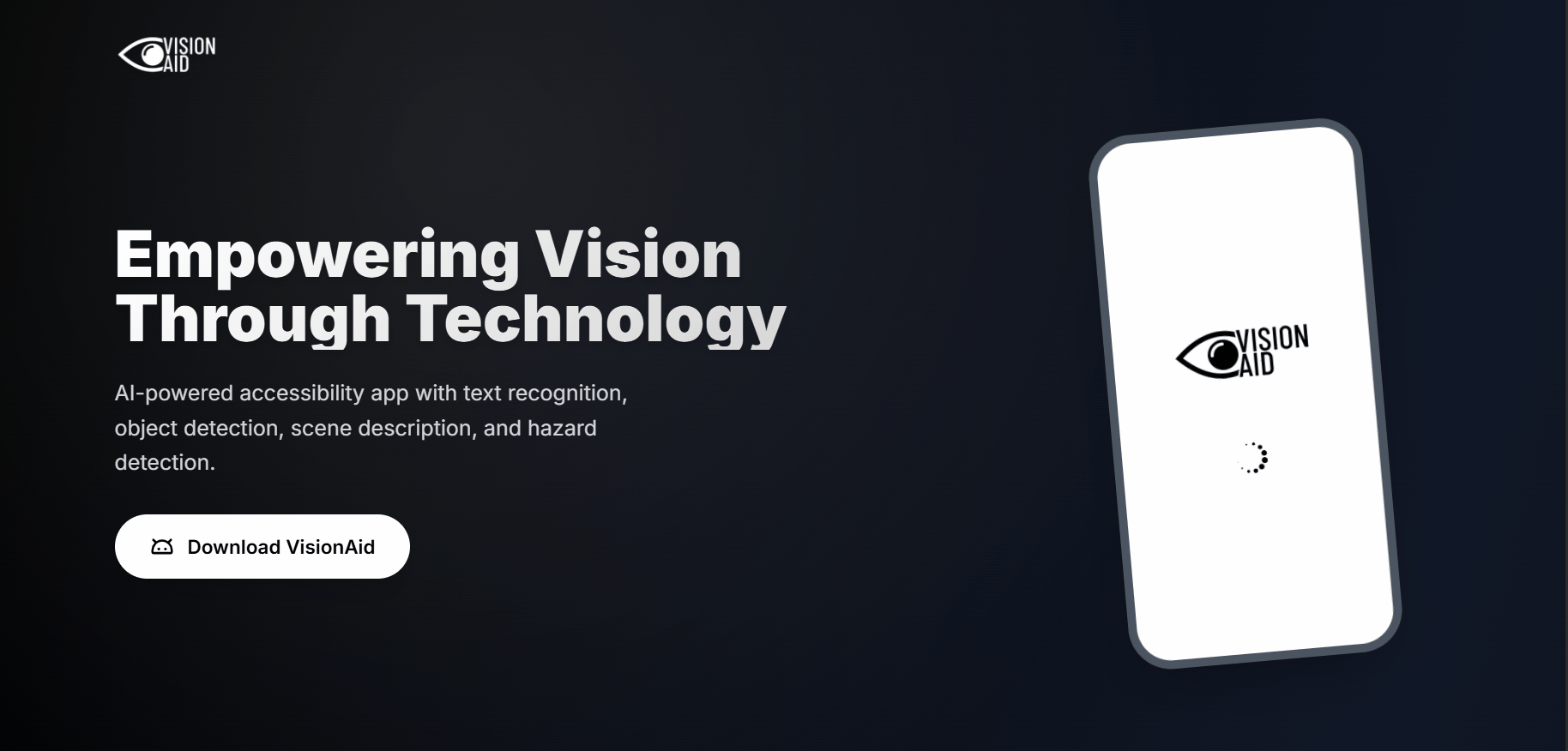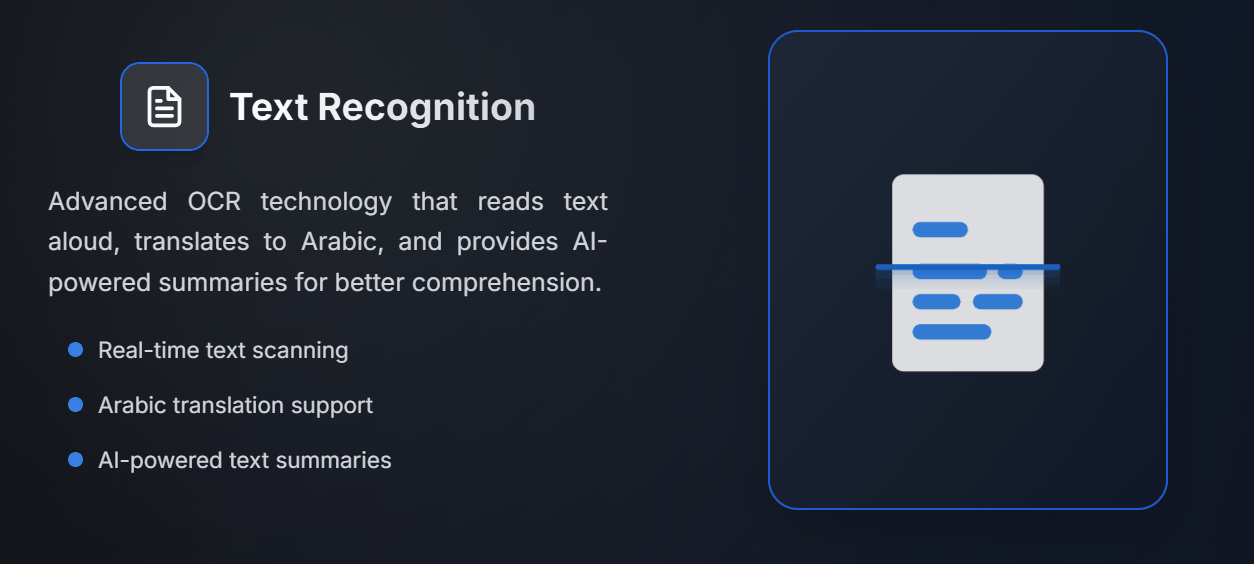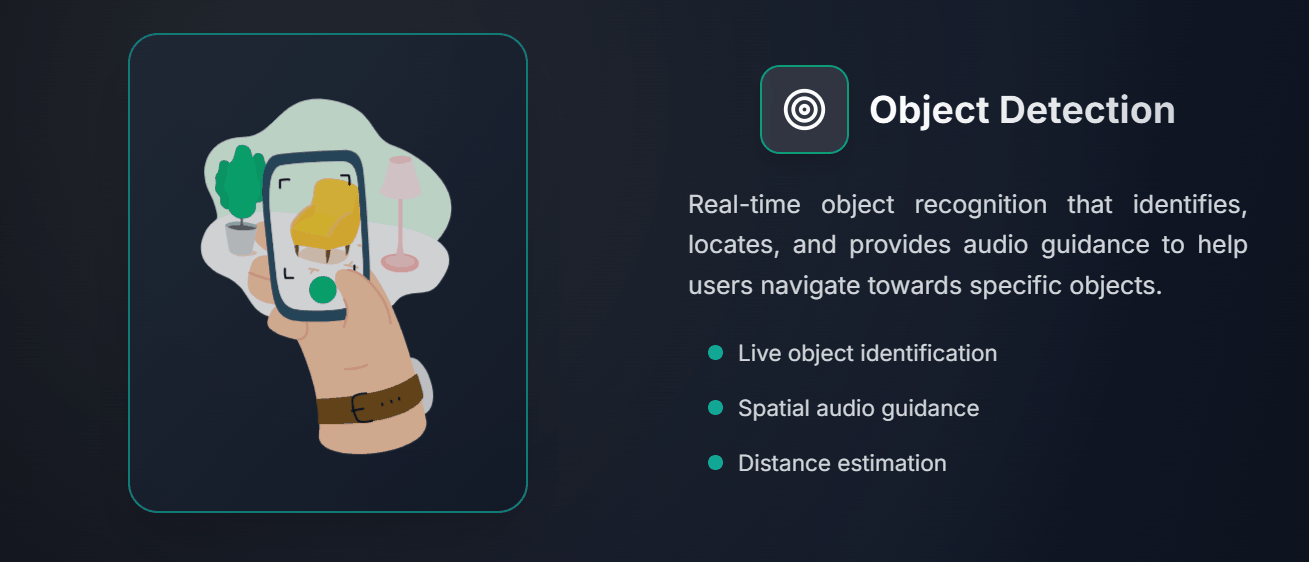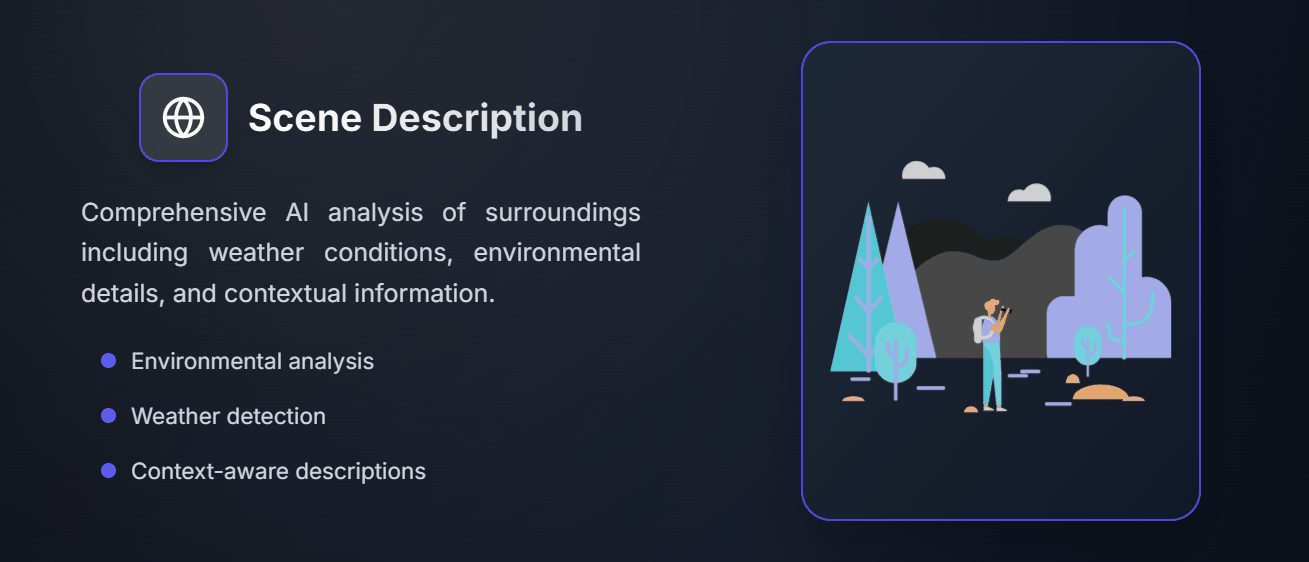VisionAid
An AI-powered accessibility application designed to assist visually impaired individuals through advanced computer vision and natural language processing technologies.

About the Project
VisionAid is an innovative mobile application that transforms the way visually impaired users interact with their environment. By leveraging cutting-edge AI technologies, the app provides real-time assistance for daily navigation and interaction challenges. Developed as part of the 19th IEEE Student Day Competition, VisionAid represents a collaborative effort between developers and academic supervisors from the University of Dubai. The application empowers vision through technology, focusing on enhancing independence and quality of life for visually impaired individuals. The app combines advanced computer vision, natural language processing, and spatial audio to create a comprehensive accessibility solution that addresses real-world challenges faced by the visually impaired community.
Key Features
- • Advanced OCR technology with real-time text scanning and recognition
- • Arabic translation support with seamless language processing
- • AI-powered text summaries for better comprehension
- • Real-time object detection with spatial audio guidance
- • Environmental scene analysis with context-aware descriptions
- • Hazard detection with immediate voice alerts for safety
- • Distance estimation for safe navigation
- • Custom object training for personalized recognition
Screenshots




Challenges & Solutions
- • Implementing real-time computer vision processing on mobile devices
- • Creating accurate spatial audio guidance for object location
- • Developing multilingual support with focus on Arabic translation
- • Optimizing AI models for mobile performance while maintaining accuracy
- • Designing intuitive audio-first user interfaces for accessibility
- • Integrating multiple AI services while ensuring reliable offline functionality
Lessons Learned
- • Understanding the critical importance of accessibility in technology design
- • Best practices for developing audio-first user interfaces
- • Techniques for optimizing AI models for mobile deployment
- • The value of collaborative development with academic research institutions
- • Importance of user-centered design when developing assistive technologies
- • Strategies for creating inclusive technology that empowers users